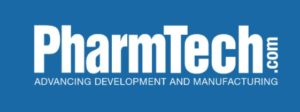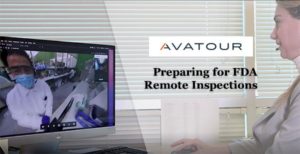For medical device manufacturers, technology can be a double-edged sword. The technologies that elevate the quality of life for patients can be used by cybersecurity bad actors to potentially harm patients or undermine the organization using the device as well as the device itself. RCA’s medical device consultants have seen the vast interconnectivity of medical devices widen the attack surface of the public health sector. Intrusions and breaches are possible because of weaknesses in a medical device’s cybersecurity design.
 Medical device vulnerabilities that are not identified and remediated before the device goes to market can serve as access points for entry into a health care facility’s network, which leads to compromising data confidentiality and integrity as well as potential patient safety.
Medical device vulnerabilities that are not identified and remediated before the device goes to market can serve as access points for entry into a health care facility’s network, which leads to compromising data confidentiality and integrity as well as potential patient safety.
That said, security now needs a seat at the design table, accompanied by its own list of requirements. Many cybersecurity weaknesses are a result of poor design choices and lack of clear requirements. Having a security expert who is familiar with medical device cybersecurity and device development should review the requirements. Many RCA medical device consultants can uncover architecture security vulnerabilities, which can be mitigated during development long before the product goes into manufacturing.
The strongest cybersecurity risk control is to use secure by design principles to eliminate the vulnerabilities. The next strongest risk control category is a protective system where the security threat can be detected, responded to, and recovered, so the risk does not materialize. The weakest cybersecurity risk controls are labelling and instructions. All three of these categories of risk controls can be used to manage cybersecurity risks in medical devices.
Effective security by design depends on the ability to understand and stay on top of cybersecurity issues to maintain the safety and security of devices, data, and users. One of the biggest challenges with medical device development is infrastructure diversity. Devices are designed, manufactured, configured, and deployed using various programming languages, operating systems, databases, networks, and hardware platforms. This means vulnerabilities can be anywhere.
One common issue that can lead to vulnerabilities is when devices still use legacy operating systems that are no longer supported by the companies that developed them. Health care organizations can mitigate these vulnerabilities by restricting access and monitoring for threats on the network where the device is connected.
It is not possible to have a completely secure device. But with a well-planned design along with full visibility of product development and the supply chain, companies can strengthen their device’s security posture. Also, cybersecurity must be monitored and maintained throughout the device’s life cycle. As new vulnerabilities are discovered, the device will require cybersecurity patches and updates. Just because something is not exploitable today does not mean it will not be exploitable in the future.
The following resources identify specific areas to focus cybersecurity efforts throughout the product’s life cycle.
International Medical Device Regulators Forum (IMDRF)
The IMDRF published the guidance “Principles and Practices for Medical Device Cybersecurity.” The document provides recommendations to help all stakeholders minimize cybersecurity risks across the product’s total life cycle. According to the guidance, medical device cybersecurity is a shared responsibility among all stakeholders, including the manufacturer, health care providers, users, and regulators. All stakeholders must understand their responsibilities and work closely with one another to continuously monitor, assess, mitigate, communicate, and respond to potential cybersecurity risks and threats throughout the life cycle of the medical device.
Technical Information Report 57 (TIR57) and TIR97
TIR57 is a cybersecurity standard for medical devices. The guidance, titled “Principles for Medical Device Security—Risk Management,” was published by the Association for the Advancement of Medical Instrumentation (AAMI). It provides recommendations on integrating cybersecurity risk management into the overall development of the device. TIR57 is closely modeled after ISO 14971 for safety risk management, which specifies the terminology, principles, and processes for risk management of medical devices.
TIR57 also works in conjunction with TIR97, which provides guidance for addressing postmarket security risk management within the risk management framework defined by ANSI/AAMI/ISO 14971. Both TIR57 and 14971 touch on the postmarket phase at a high level. TIR97 expands on the foundation established in TIR57 and focuses on establishing security risk management for the postmarket phase of the product’s life cycle.
Recognizing the need for protection of medical devices in an increasingly digitized world, the U.S. Food and Drug Administration (FDA) added TIR57 to its list of recognized consensus standards. Device manufacturers who implement it can expect to have all the information expected by the FDA in place for premarket submissions.
NIST Framework for Improving Critical Infrastructure Cybersecurity
The National Institute of Standards and Technology (NIST) is an agency within the Department of Commerce that promotes innovation for enhancing science, business, technology, and economic security. The organization produced a document called the “Framework for Improving Critical Infrastructure Cybersecurity,” which assists companies in improving the security of their infrastructure.
The framework is useful for any organization no matter what type or level of cybersecurity it currently employs. The framework is not intended to replace a company’s current cybersecurity strategy. Instead, it advises organizations on identifying their current cybersecurity posture, determining a target state for cybersecurity efforts, and developing a plan for progressing toward the target state.
Open Web Application Security Project (OWASP)
OWASP is a nonprofit organization that works to improve the security of software. The OWASP Top 10 is a standard awareness document for developers that provides information about the most current critical security risks to web applications. As part of their approach to security, companies can incorporate the OWASP findings and recommendations into their security practices. The OWASP list is routinely updated to stay up to date with the ongoing advances in technology.
FDA Cybersecurity Recommendations
According to the FDA’s guidance on premarket submissions for cybersecurity, a trustworthy medical device:
- Contains hardware, software, and/or programmable logic that is reasonably secure from cybersecurity intrusion and misuse.
- Provides a reasonable level of availability, reliability, and correct operation.
- Is reasonably suited to performing its intended functions.
- Adheres to generally accepted security procedures.
The agency’s Quality System Regulation (QSR) suggests that software device manufacturers employ a risk-based approach to the design and development of medical devices, which includes setting up appropriate cybersecurity protections. Using this approach, the FDA encourages device manufacturers to:
- Identify assets, threats, and vulnerabilities.
- Assess the impact of threats and vulnerabilities on the device’s functionality, end users, and patients.
- Assess the likelihood of a threat as well as the likelihood of a vulnerability being exploited.
- Determine risk levels and suitable mitigation strategies.
- Evaluate residual risk and risk acceptance criteria.
Implementing these design controls improves the likelihood that the FDA will find your device meets its applicable statutory standard for premarket review.
To effectively combat the ongoing cybersecurity threats, companies should have a clear definition of responsibilities for all relevant stakeholders regarding infrastructure, policy development, and communication. To achieve this, regulatory agencies along with cybersecurity experts strongly advocate effective and unified collaboration across the enterprise. Using a platform-based quality management system (QMS), companies easily manage design control, risk, changes, suppliers, etc. from a single platform. This way, all stakeholders can have an appreciable impact on the transformation of the product throughout its design, development, and postmarket life cycle.
Follow the link to read the full article where we go over specific areas to focus cybersecurity efforts throughout the product’s life cycle as well as FDA Cybersecurity Recommendations.
About RCA’s Medical Device Services
The regulatory compliance process surrounding the medical device industry involves a strict adherence to pre/post market information throughout a device’s life-cycle. Even a single compliance issue you have can turn into a significant effect on your business. Regulatory Compliance Associates medical device consultants can help guide you through any stage of this strategic process, with capabilities during product development through the regulatory clearance/approval of your product.
Our team of over 500 medical device consulting Experts — including former FDA officials and regulatory compliance leaders in the field of medical device regulation — will work with your company to create a quality assurance and regulatory compliance approach tailored to your products and regulatory needs. Regulatory Compliance Associates works with international Fortune 100 companies, venture capital start ups, and companies of all sizes and shapes. our compliance enforcement solutions for law firms include remediation for warning letters, FDA 483’s, import bans or consent decrees. Very few regulatory compliance services have the same regulatory compliance expertise in a variety of medical fields.
Cybersecurity
For medical device manufacturers, technology can be a double-edged sword. The innovative technologies that elevate the quality of life for patients can also be used to potentially undermine the organization using the device. The consequences can affect the device itself if Regulatory Compliance Associates medtech consultants do not implement good IoT cybersecurity and FDA cybersecurity protocols.
At Regulatory Compliance Associates, we offer a wide variety of services for medical devices security to help ensure that your product is protected from cyber-attacks. With a well-planned design, along with full visibility of product development and the supply chain, Regulatory Compliance Associates medical device consultant Experts can help strengthen your device’s cybersecurity. We partner with medical device companies in each phase of the design cycle, including protecting inputs from threat exposure and hardening outputs for regulatory compliance & FDA submission approval of your medical technology.
Regulatory Affairs
Regulatory affairs is Regulatory Compliance Associates® backbone, and we handle more submissions in a month than many manufacturers do in a lifetime. Our regulatory compliance consulting Experts have experience working with the FDA, global regulatory bodies and / or agencies, and notified bodies worldwide. Therefore, you can count on us for in-depth and up-to-date insights which increase speed-to-market.
As a trusted regulatory affairs consultant, our FDA veterans and industry experts represent Regulatory Compliance Associates® as one of the top medical device consulting firms. We’re here to help you navigate the difficulties associated with new product submissions. Regulatory Compliance Associates® medical device consulting company has expertise in both the approval process and post-approval support.
- New Product Approval
- Post-Approval Support
- Outsourced Staffing
- EU MDR
- Combination Products
Compliance Assurance
Increasingly, life science companies are feeling the pressure of greater scrutiny by regulators, and responding by developing sustainable compliance strategies. Whether it’s preparing for an audit, developing a response to an FDA finding, or remediation to an adverse event, Regulatory Compliance Associates® can help.
Our network of over 500 medical device consultant & FDA, MHRA & EMA veterans are industry professionals offers a unique blend of expertise. This allows Regulatory Compliance Associates® to handle both simple and complex regulatory compliance challenges within medical device consulting companies.
- Gap Assessments
- Internal Audits
- Employee Training
- Notified Body Response
- Data Integrity
Quality Assurance
Regulatory Compliance Associates® Quality Assurance consulting includes quality system assessments, strategy, implementations, and identification of quality metrics to ensure continuous improvement, aligning with your business needs and goals. Each Regulatory Compliance Associates® medical device consultant is a quality expert with experience spanning major corporations and start-ups. We know firsthand how to achieve, maintain, and improve quality, and we excel in transferring this knowledge to your organization.
In the medical devices field, quality assurance (QA) is more than merely ensuring the quality of a finished product. You need the tools to monitor and regulate every process from the design of a new product to continued quality compliance as the device is sent to market. At Regulatory Compliance Associates®, we offer you the quality assurance services you need to monitor these processes and ensure quality compliance every step of the way.
With more than 20 years experience working with medical device consulting companies, Regulatory Compliance Associates® trusted medical device quality assurance consultant team is fully equipped to handle your unique QA needs.
- ISO13485
- 21 CFR 210
- 21 CFR 211
- Outsourced Staffing
- MDSAP
- Facility Validation
- Equipment Validation
- Quality Metrics
Remediation Support
Regulatory Compliance Associates® is widely recognized within medical device consulting companies & the life science industry for remediation support. Regulatory Compliance Associates® ability to help companies successfully resolve complex regulatory challenges have a proven track record of success. Our medical device consulting services include significant experience with the development of responses to 483 Observations, Warning Letters, Untitled Letters and Consent Decrees.
- Regulatory Action
- Regulatory Compliance
- Regulatory Enforcement
- Warning Letter
- 483 Observation
- Oversight Services
Our value goes beyond the initial response by helping companies successfully execute their action plans, develop an improved compliance culture tailored to the needs of their business, and ultimately move beyond the regulatory action to emerge as a stronger business. We negotiate difficult demands of remediation with insight and the clear advantage of our medical device consultant expertise and experience that makes partnering with Regulatory Compliance Associates® a competitive differentiator in the remediation space.
- Quality System
- Technical File
- Design History File
- Data Integrity
- cGMP
Strategic Consulting
Whether it’s a strategy, a technical plan, or project, Regulatory Compliance Associates® medical device consultancy can help ensure a successful project. Regulatory Compliance Associates® medical device strategy consulting can deliver your project on time, on budget, and you’re never embroiled in a costly mistake.
Our medical device consultant Experts are industry Experts are here to provide the unique insight you need before an M&A deal, through a staffing crisis and in every area of your product’s development and life cycle. As the trusted medical device manufacturing consultants of thousands of companies around the world, we have the knowledge and expertise needed to deliver exceptional results to your business — no matter your size or unique needs.
- Manufacturing Optimization
- Product Lifecycle Management
- Mergers & Acquisitions (M&A)
- Due Diligence
- Device Vigilance
- Risk Management Plan
- Product Complaints
- Medical Information
About Regulatory Compliance Associates
 Regulatory Compliance Associates® (RCA) provides medical device consulting to the following industries for resolution of life science challenges:
Regulatory Compliance Associates® (RCA) provides medical device consulting to the following industries for resolution of life science challenges:
- Life Sciences
- Pharmaceutical
- Biologic & Biotechnology
- Sterile compounding
- Medical device
- Lab Testing
We understand the complexities of running a life science business and possess areas of expertise that include every facet of R&D, operations, regulatory affairs, quality, and manufacturing. We are used to working on the front lines and thriving in the scrutiny of FDA, Health Canada, MHRA and globally-regulated companies.
As your partners, we can negotiate the potential minefield of regulatory compliance and regulatory due diligence with insight, hindsight, and the clear advantage of our unique expertise and experience.
- Founded in 2000
- Headquartered in Wisconsin (USA)
- Expertise backed by over 500 industry subject matter experts
- Acquired by Sotera Health in 2021
About Sotera Health
The name Sotera Health was inspired by Soteria, the Greek goddess of safety, and reflects the Company’s unwavering commitment to its mission, Safeguarding Global Health®.
Sotera Health Company, along with its three best-in-class businesses – Sterigenics®, Nordion® and Nelson Labs®, is a leading global provider of mission-critical end-to-end sterilization solutions and lab testing and advisory services for the healthcare industry. With a combined tenure across our businesses of nearly 200 years and our industry-recognized scientific and technological expertise, we help to ensure the safety of over 190 million patients and healthcare practitioners around the world every year.
We are a trusted partner to more than 5,800 customers in over 50 countries, including 40 of the top 50 medical device companies and 8 of the top 10 pharmaceutical companies.
Commitment to Quality
Our Certificate of Registration demonstrates that our Quality Management System meets the requirements of ISO 9001:2015, an internationally recognized standard of quality.
To begin the Regulatory Compliance Associates® scoping process today, please enter your information in the blue form below and click the submit button at the bottom of the webpage.







 Regulatory Compliance Associates® (
Regulatory Compliance Associates® (